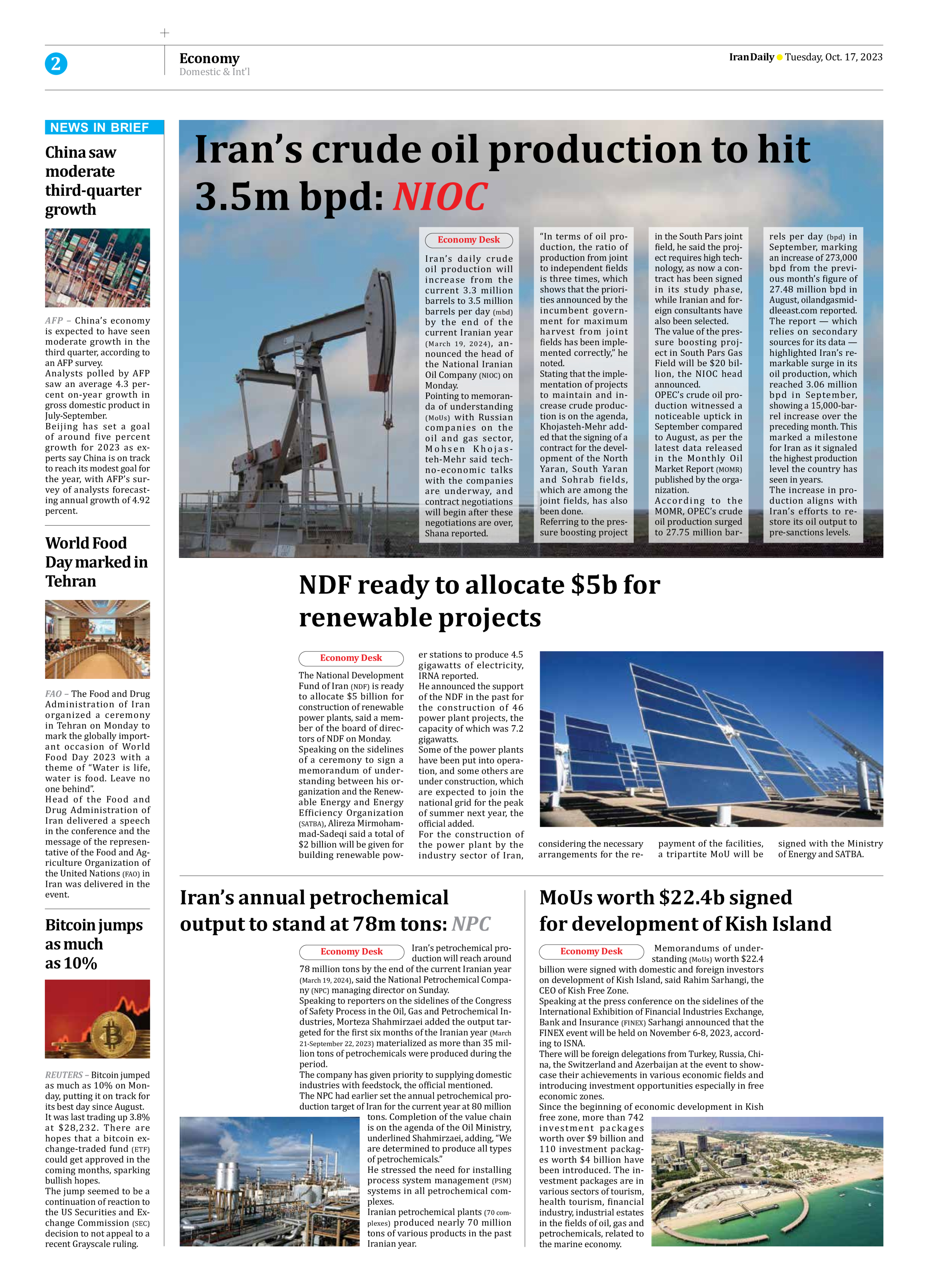
Iran’s crude oil production to hit 3.5m bpd: NIOC
Iran’s daily crude oil production will increase from the current 3.3 million barrels to 3.5 million barrels per day (mbd) by the end of the current Iranian year (March 19, 2024), announced the head of the National Iranian Oil Company (NIOC) on Monday.
Pointing to memoranda of understanding (MoUs) with Russian companies on the oil and gas sector, Mohsen Khojasteh-Mehr said techno-economic talks with the companies are underway, and contract negotiations will begin after these negotiations are over, Shana reported.
“In terms of oil production, the ratio of production from joint to independent fields is three times, which shows that the priorities announced by the incumbent government for maximum harvest from joint fields has been implemented correctly,” he noted.
Stating that the implementation of projects to maintain and increase crude production is on the agenda, Khojasteh-Mehr added that the signing of a contract for the development of the North Yaran, South Yaran and Sohrab fields, which are among the joint fields, has also been done.
Referring to the pressure boosting project in the South Pars joint field, he said the project requires high technology, as now a contract has been signed in its study phase, while Iranian and foreign consultants have also been selected.
The value of the pressure boosting project in South Pars Gas Field will be $20 billion, the NIOC head announced.
OPEC’s crude oil production witnessed a noticeable uptick in September compared to August, as per the latest data released in the Monthly Oil Market Report (MOMR) published by the organization.
According to the MOMR, OPEC’s crude oil production surged to 27.75 million barrels per day (bpd) in September, marking an increase of 273,000 bpd from the previous month’s figure of 27.48 million bpd in August, oilandgasmiddleeast.com reported. The report — which relies on secondary sources for its data — highlighted Iran’s remarkable surge in its oil production, which reached 3.06 million bpd in September, showing a 15,000-barrel increase over the preceding month. This marked a milestone for Iran as it signaled the highest production level the country has seen in years.
The increase in production aligns with Iran’s efforts to restore its oil output to pre-sanctions levels.







